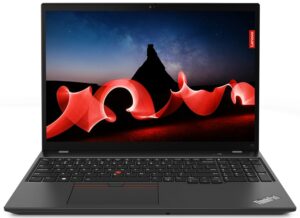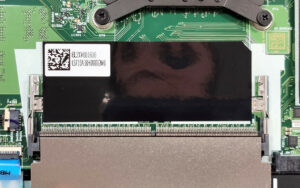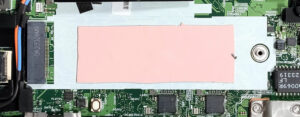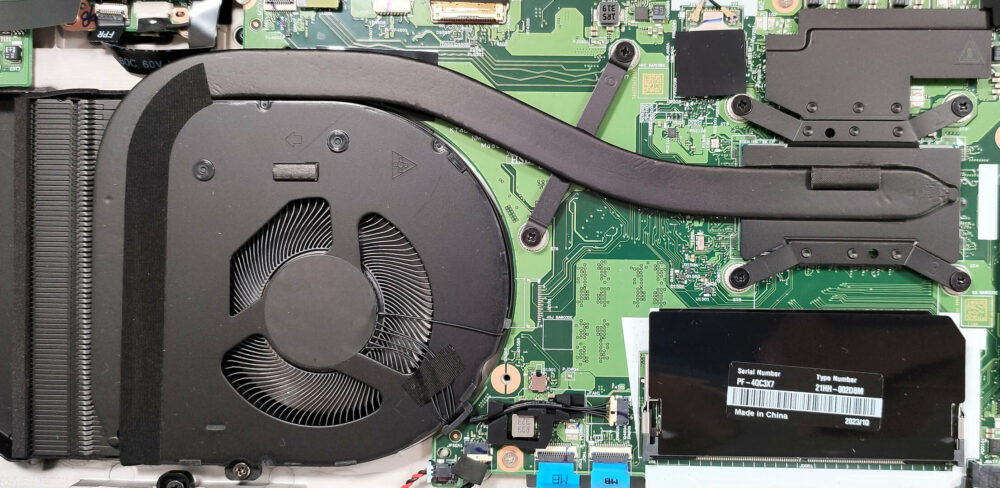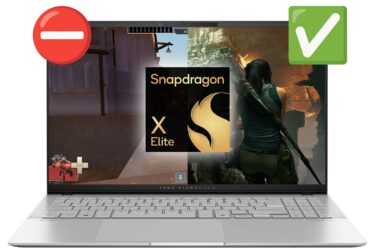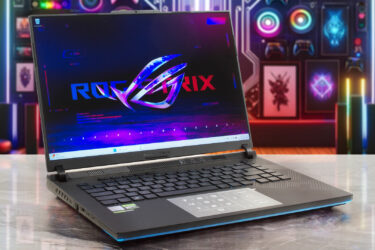How to open Lenovo ThinkPad T16 Gen 2 – disassembly and upgrade options
Step 1: Opening the Lenovo ThinkPad T16 Gen 2
- Ensure the laptop is powered off and on a static-free surface.
- Remove the 8 captive Phillips-head screws from the bottom of the laptop.
- Use a lever tool to pop the zones behind the hinges, then pry the sides and the front with a thin plastic tool.
Step 2: Battery Removal
- Wear gloves to avoid short circuits due to the built-in battery connector.
- Detach the battery connector carefully.
- Remove the six Phillips-head screws and lift the battery out of the chassis.
More info: The 52.5Wh battery provides approximately 20 hours of web browsing or 9 hours and 5 minutes of video playback. An optional 86Wh model is available.
Memory Upgrade
- Identify if your device has soldered memory or a SODIMM slot based on the GPU configuration.
- For iGPU-only models with a SODIMM, check the type of installed RAM (DDR4 or DDR5) for compatibility with potential upgrades.
More info: Supports up to 32GB for DDR4 and 16GB for DDR5 SODIMMs, but CPU capabilities may allow for higher limits.
You can buy DDR5 RAM modules here: Buy from Amazon.com (#CommissionsEarned)
Hint: Don’t forget to check out our Top M.2 SSDs Performance Rankings for insights on the best storage options available.
Storage Upgrade
- Locate the M.2 slot for the SSD next to the WWAN slot on the right side.
- Note the thermal pad below the preinstalled NVMe for improved cooling performance.
You can buy Gen 4 M.2 SSDs here: Buy from Amazon.com (#CommissionsEarned)
Step 3: Cooling System Overview
- Inspect the single big fan and the heat pipe configuration.
- Note the side-mounted heat sink and the heat spreader for effective heat dissipation.
Lenovo ThinkPad T16 Gen 2 (Intel, Integrated) in-depth review
Lenovo states that the Intel version of the ThinkPad T16 Gen 2 is a "productivity companion everywhere and anywhere". It seems true since the laptop isn't heavy for a 16-icher. This is a business device so the performance is important. You can choose among four U-series Raptor Lake CPUs and four 28W P chips. If battery life is what matters the most for you, the 15W models are the way to go while the P-series variants are for the power users. There is one dGPU variant here and that's the NVIDIA GeForce MX550. All machines with this video card rely on soldered memory while the iGPU-only iteratio[...]

Pros
- Good comfort under max CPU stress
- Snappy performance
- 1x SODIMM slot for the iGPU-only devices
- PWM-free display (CSOT MNG007JA1-2 (LEN41B7))
- 16:10 aspect ratio, very good contrast, and wide viewing angles (CSOT MNG007JA1-2 (LEN41B7))
- High max brightness, 93% sRGB coverage, and accurate color representation with our "Design and Gaming" profile (CSOT MNG007JA1-2 (LEN41B7))
- Optional IR Web camera + optional fingerprint reader
- Has a privacy shutter
- Comfortable spill-resistant keyboard and smooth touchpad
- Good I/O with two Thunderbolt 4 / USB 4 ports
- High CPU clocks, especially in short and medium loads
- Very long battery life
- Good build quality + grippy surface
- Optional Smart card reader, Nano-SIM card slot, and NFC
Cons
- The dGPU laptops have just soldered RAM
- Part of the memory of the iGPU-only machines is soldered
- Just one M.2 slot
- Many features are only optional
